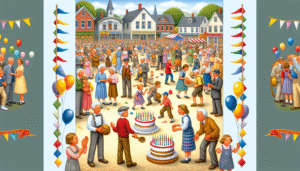
Farmers Grapple with Devastating Drought Impacts
The relentless grip of drought continues to tighten across vast agricultural regions, leaving farmers struggling to maintain their livelihoods and raising concerns about food security. From parched fields to dwindling water reserves, the consequences are far-reaching and demand immediate attention. Understanding the complexities of this crisis requires examining its varied impacts on different farming sectors and exploring potential mitigation strategies.
Crop Production Under Pressure
Drought’s most direct impact is on crop production. Lack of adequate rainfall inhibits seed germination, stunts plant growth, and reduces yields. Common drought-tolerant crops like corn and wheat still suffer significant losses under severe drought conditions. Fruit and vegetable production faces even greater challenges, with many varieties requiring consistent irrigation throughout their growth cycle. This scarcity translates to higher market prices for consumers and diminished income for farmers.
The geographic distribution of drought further exacerbates the issue. Regions heavily reliant on rain-fed agriculture are particularly vulnerable. For example, the ongoing drought in the Horn of Africa has decimated crops and livestock, leading to widespread famine and displacement. Even in regions with developed irrigation systems, prolonged drought can deplete water reservoirs and restrict water allocations for agriculture. This can lead to difficult decisions about which crops to prioritize, often forcing farmers to abandon less profitable or water-intensive crops.
Livestock Farming Faces Forage Shortages
Drought doesn’t just affect crops; livestock farmers also face severe challenges. Pastures wither under the scorching sun, leading to forage shortages. This necessitates costly supplemental feeding with purchased hay or grain, impacting already thin profit margins. The lack of adequate nutrition can weaken livestock, making them more susceptible to diseases and reducing their productivity. Dairy farmers experience decreased milk production, and ranchers see reduced weight gain in their cattle.
The scarcity of water also poses a significant problem for livestock. Animals require substantial amounts of water for drinking and cooling, especially during heat waves that often accompany drought. Limited water availability can lead to dehydration, heat stress, and even death in extreme cases. Farmers may be forced to sell off their livestock prematurely at lower prices due to the inability to provide adequate care.
Economic Ripple Effects and Rural Communities
The economic consequences of drought extend far beyond individual farms. Reduced agricultural output impacts related industries, such as food processing, transportation, and retail. Rural communities heavily reliant on agriculture suffer job losses and economic decline. The mental health toll on farmers facing financial hardship and the loss of their crops and livestock cannot be understated. Stress, anxiety, and depression become prevalent in drought-stricken communities.
Furthermore, drought can exacerbate existing inequalities. Small-scale farmers and those in developing countries often lack the resources and infrastructure to cope with prolonged dry spells. They are less likely to have access to irrigation systems, drought-resistant crop varieties, or financial safety nets. This makes them disproportionately vulnerable to the devastating impacts of drought.
Mitigation Strategies and Adaptation Measures
Addressing the challenges of drought requires a multi-faceted approach. Improving water management practices is crucial. This includes implementing efficient irrigation techniques, promoting water conservation, and developing drought-resistant crop varieties. Investing in water storage infrastructure can help ensure a reliable water supply during dry periods. Soil health management plays a vital role in drought resilience. Practices like no-till farming and cover cropping improve soil structure, increase water infiltration, and enhance the soil’s ability to retain moisture.
Diversification of crops and livestock can also reduce the risks associated with drought. By cultivating a variety of crops with different water requirements and growing seasons, farmers can mitigate the impact of crop failures. Similarly, integrating livestock and crop production can create more resilient farming systems. Livestock can graze on crop residues, providing a valuable source of manure for soil fertility.
Early warning systems and drought monitoring are essential for effective drought management. Providing farmers with timely and accurate information about drought conditions allows them to make informed decisions about planting, irrigation, and livestock management. Access to climate information services can help farmers adapt their practices to changing weather patterns and prepare for future droughts. Government policies and support programs play a critical role in assisting farmers during drought periods. Drought relief programs, crop insurance, and financial assistance can help alleviate the economic burden on farmers and enable them to recover from losses.
The Long-Term Outlook and Climate Change
The increasing frequency and intensity of droughts in many regions are linked to climate change. Rising global temperatures, changing precipitation patterns, and increased evaporation rates are contributing to more severe and prolonged drought conditions. Addressing climate change through reducing greenhouse gas emissions is essential to mitigate the long-term risks of drought. Investing in climate adaptation measures, such as developing drought-resistant crops and improving water management practices, is also crucial for building resilience in agricultural systems. The future of agriculture depends on our ability to adapt to a changing climate and develop sustainable solutions to manage the growing challenges of drought.















